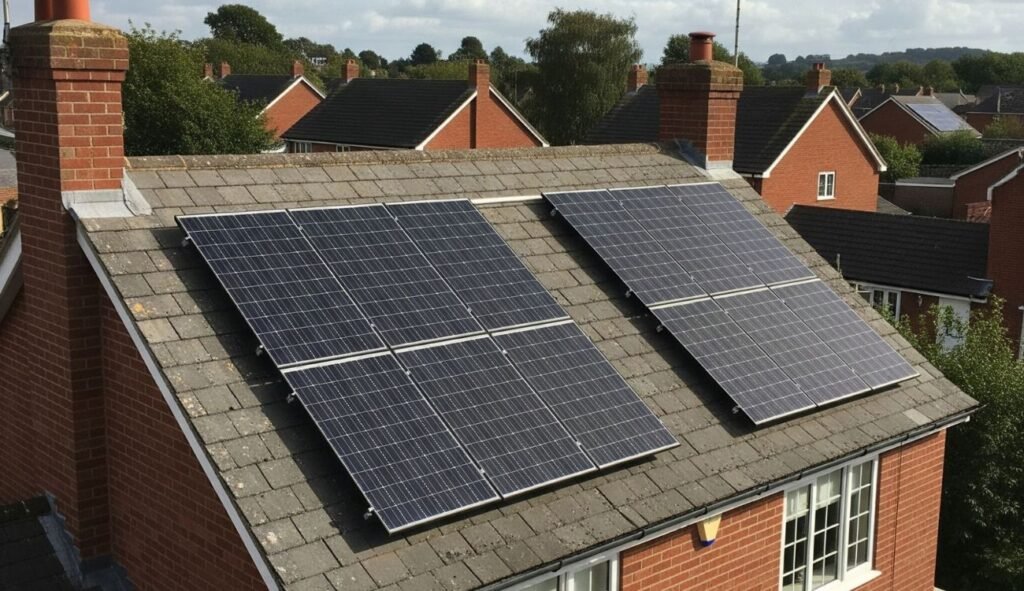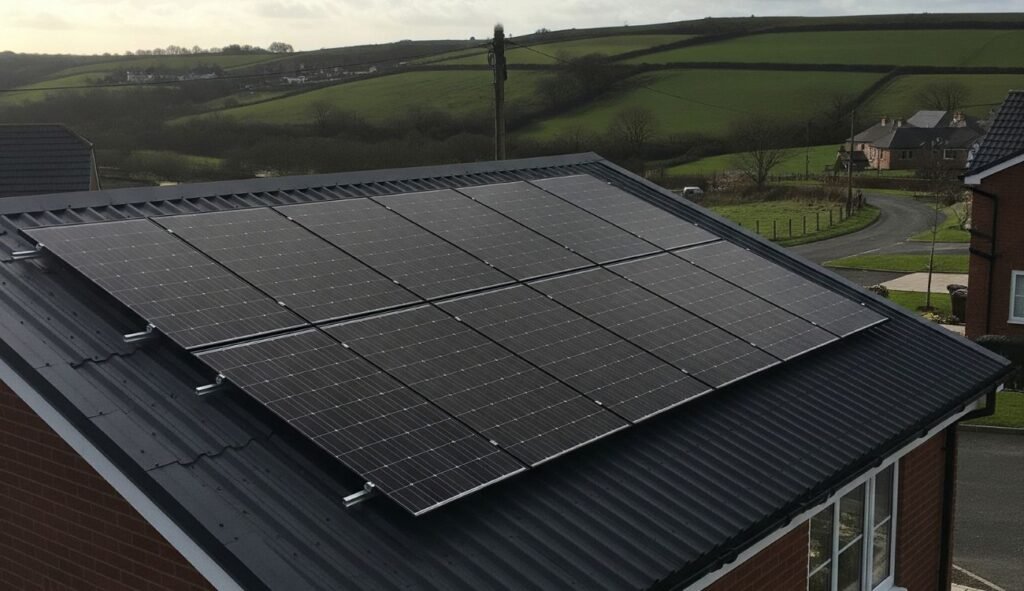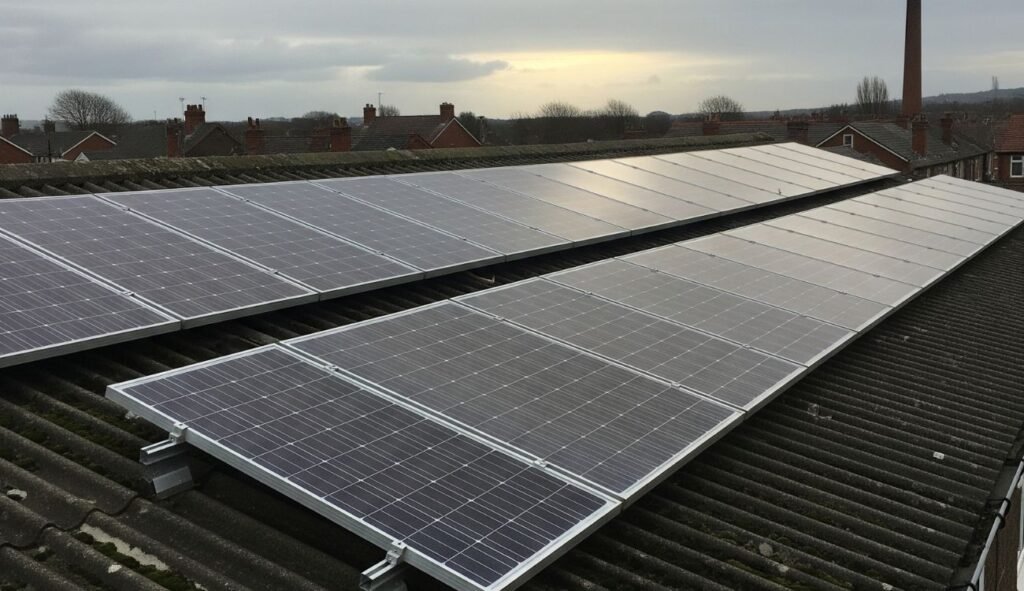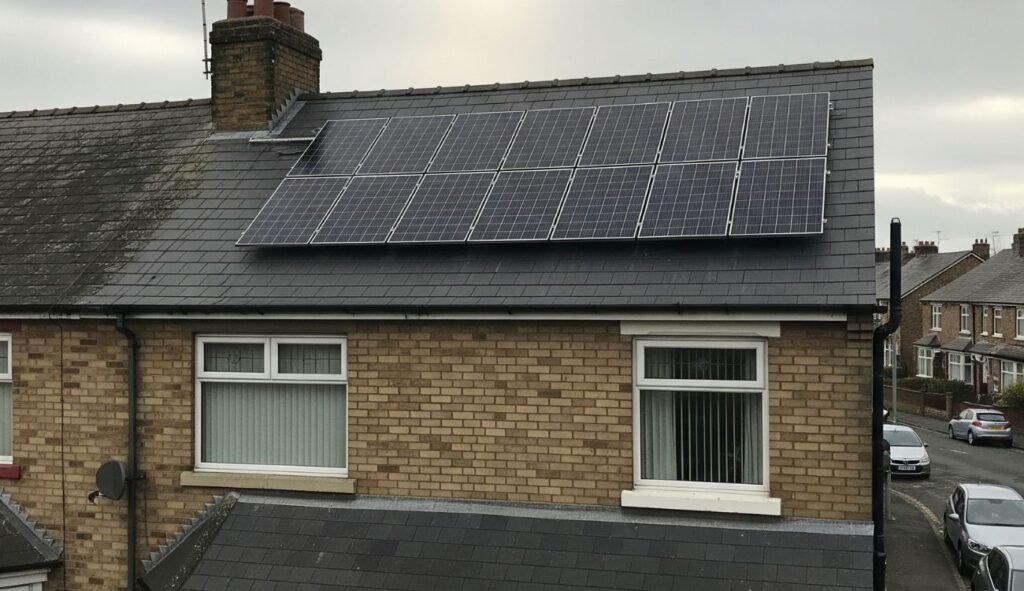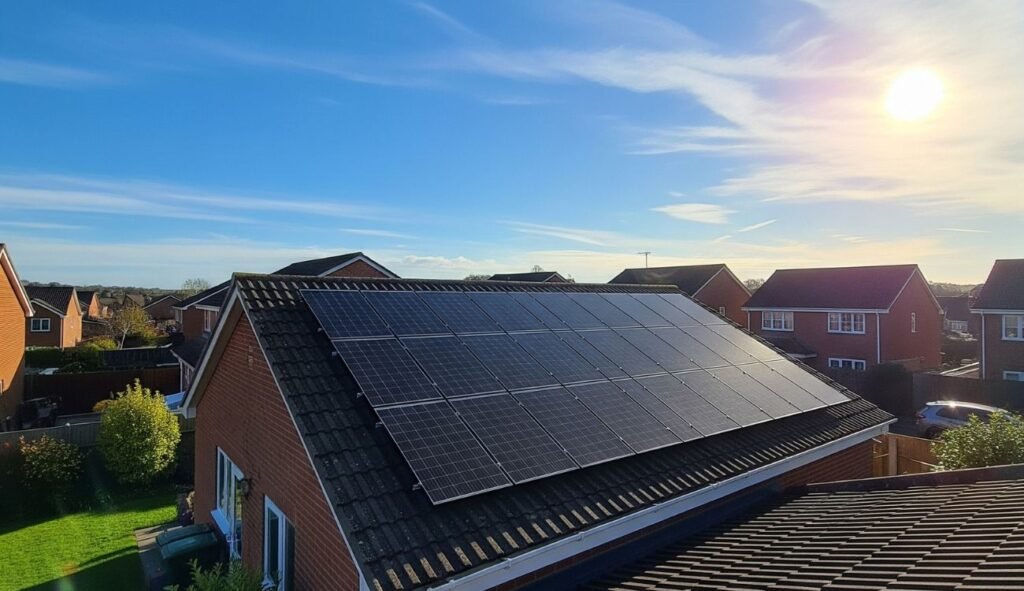Are you a homeowner or landlord looking to power your underfloor heating with solar energy? Determining how many solar panels you need for underfloor heating is a key step towards a sustainable, cost-effective heating solution.
This guide will walk you through the process, breaking down the calculations, system types, and considerations specific to the UK.
By the end, you’ll have a clear understanding of how to size your solar panel system and why partnering with a trusted installer like Future Heat can help you achieve energy independence.
How Many Solar Panels Are Required for Underfloor Heating?
Calculating the number of solar panels needed to power underfloor heating depends on several factors, including your home’s energy consumption, the type of underfloor heating system, and the solar potential in your area.
Let’s break it down step-by-step to make it easy for homeowners and landlords to understand.
What Factors Influence the Number of Solar Panels Needed?
Several variables determine how many solar panels you’ll need to power your underfloor heating system effectively. According to the Energy Saving Trust, solar panels can significantly reduce energy bills when properly sized for your home’s needs.
Here are the key factors:
- Energy Consumption of Underfloor Heating: Underfloor heating systems vary in energy use depending on whether they are electric (dry) or water-based (wet). Electric systems typically consume 100–200 W/m², while wet systems, paired with a heat pump or boiler, may use less energy overall.
- Home Size and Heated Area: Larger homes or those heating more floor space require more energy, increasing the number of panels needed.
- Solar Panel Efficiency: Modern solar panels have efficiencies of 15–24%, with monocrystalline panels being the most efficient for domestic use. Higher-efficiency panels generate more electricity per square metre, reducing the total number needed.
- Geographic Location: In the North East of England, average sunlight hours range from 3.2–3.7 per day, lower than southern regions. This impacts panel output and may require additional panels.
- Roof Orientation and Tilt: South-facing roofs with a 30–40° tilt are optimal for solar energy capture in the UK.
- Shading and Weather: Shading from trees or buildings and cloudy weather can reduce panel efficiency, necessitating more panels or a battery storage system.
How Do I Calculate My Underfloor Heating Energy Needs?
To determine how many solar panels you need, start by calculating the energy consumption of your underfloor heating system. Here’s a simple process:
- Determine the Power Rating: Check the power rating of your underfloor heating system, typically measured in watts per square metre (W/m²). For example, electric underfloor heating might use 150 W/m².
- Measure the Heated Area: Calculate the total floor area to be heated in square metres (m²). For instance, a 50 m² living space is common for a medium-sized home.
- Estimate Daily Usage: Multiply the power rating by the heated area and the number of hours the system runs daily. For example:
- 150 W/m² × 50 m² × 6 hours = 45,000 Wh (45 kWh) per day.
- Calculate Annual Energy Needs: Multiply the daily consumption by the number of days the heating is used annually (e.g., 190 days for the UK heating season):
- 45 kWh/day × 190 days = 8,550 kWh/year.
According to Ofgem, the average UK household uses 2,700 kWh of electricity annually for general needs, so underfloor heating can significantly increase your energy demand.
How Many Solar Panels Are Needed to Meet This Demand?
In the UK, a typical solar panel produces 250–450 kWh per year, depending on its wattage (350–450 W), efficiency, and local sunlight conditions. In the North East, where sunlight is less abundant, a 400 W panel might generate around 300 kWh annually due to lower solar irradiation.
Using the example above (8,550 kWh/year for underfloor heating):
- Number of Panels: Divide the annual energy need by the output per panel:
- 8,550 kWh ÷ 300 kWh/panel = approximately 28–29 panels.
This is significantly more than the 8–13 panels needed for a typical 2–3 bedroom home’s general electricity needs (2,700 kWh/year).
For a more precise estimate, Future Heat’s expert installers can assess your home’s specific requirements, factoring in roof space and local conditions in Tyne and Wear and the North East.
| System Type | Energy Consumption (kWh/year) | Est. Panels Needed (400 W, 300 kWh/year) |
|---|---|---|
| Electric UFH (50 m², 150 W/m², 6 hr/day, 190 days) | 8,550 | 28–29 |
| Wet UFH with Heat Pump (50 m², 50 W/m², 6 hr/day, 190 days) | 2,850 | 9–10 |
| Typical Household (2,700 kWh/year, no UFH) | 2,700 | 8–10 |
What Types of Underfloor Heating Systems Work with Solar Panels?
Underfloor heating systems come in two main types: electric (dry) and wet (hydronic). Both can be powered by solar energy, but their compatibility and efficiency differ.
Can Electric Underfloor Heating Be Powered by Solar Panels?
Electric underfloor heating uses heating mats or cables to generate radiant heat. Solar photovoltaic (PV) panels produce electricity that can directly power these systems.
However, electric systems have higher running costs, averaging £229 per year for a typical home, compared to £57 for wet systems.
Pros
- Easier to install in existing homes, especially for smaller areas like bathrooms.
- Directly compatible with solar PV panels.
Cons
- High energy consumption requires more solar panels.
- Relies on grid electricity at night unless paired with a solar battery.
Can Wet Underfloor Heating Be Powered by Solar Energy?
Wet underfloor heating circulates hot water through pipes under the floor, typically powered by a boiler or heat pump. Solar thermal panels can heat water directly, or solar PV panels can power an electric water heater or heat pump.
According to Solar Energy UK, combining wet underfloor heating with a heat pump and solar panels is highly efficient, reducing energy use by up to 35% compared to traditional radiators.
Pros
- Lower energy consumption than electric systems.
- Ideal for new builds or well-insulated homes.
- Compatible with solar thermal or PV panels.
Cons
- Higher installation costs, especially for retrofits.
- May require a backup boiler or heat pump for consistent heating.
For homeowners in Newcastle or the wider North East, Future Heat can recommend the best underfloor heating system to pair with your solar setup, ensuring maximum efficiency and comfort.
How Can I Optimise My Solar System for Underfloor Heating?
To ensure your solar panels effectively power your underfloor heating, consider these optimisation strategies.
Why Is Roof Orientation and Tilt Important?
South-facing roofs with a 30–40° tilt capture the most sunlight in the UK, maximising panel output. East or west-facing roofs produce 15–20% less energy, while north-facing roofs are unsuitable.
A professional assessment from Future Heat can confirm your roof’s suitability and optimise panel placement.
How Can Solar Batteries Help?
Solar panels generate electricity only during daylight hours, but underfloor heating may be needed at night. A solar battery stores excess daytime energy for use after dark, reducing reliance on the grid.
The average solar battery costs £4,500 and can store 5–20 kWh, covering several hours of heating. This is especially useful in the North East, where winter daylight is limited.
What Role Does Insulation Play?
Good insulation reduces heat loss, lowering the energy needed for underfloor heating. The UK government recommends insulating floors, walls, and lofts to improve energy efficiency.
For example, a well-insulated home may reduce heating energy needs by up to 20%, potentially requiring fewer solar panels.
What Are the Costs and Savings of Solar-Powered Underfloor Heating?
Investing in solar panels for underfloor heating involves upfront costs but offers long-term savings, especially with rising energy prices.
How Much Does a Solar Panel System Cost?
A 4 kW solar panel system (8–10 panels) costs £5,000–£6,000, suitable for general household needs. For underfloor heating, a larger system (e.g., 10–12 kW, 25–30 panels) may cost £10,000–£15,000, depending on your home’s size and heating demands.
Adding a solar battery increases costs by £4,500–£8,000.
What Savings Can I Expect?
Solar panels can save £750 annually on electricity bills for a typical household, with greater savings possible when powering underfloor heating. The Smart Export Guarantee (SEG) allows you to earn money by selling excess electricity back to the grid, with rates varying by supplier.
Over 25 years, the lifespan of most solar panels, savings can offset installation costs.
For a tailored cost-benefit analysis, request a quote from Future Heat, serving Tyne and Wear, Newcastle, and the North East. Their MCS-certified installers ensure high-quality systems that maximise savings.
Frequently Asked Questions (FAQs)
Can I Use Solar Panels to Power Underfloor Heating in a Commercial Property?
Yes, solar panels can power underfloor heating in commercial buildings, but the system size will depend on the property’s energy demands. Larger spaces may require 50–100 panels or more, paired with a high-capacity battery or heat pump.
Are There Government Grants for Solar-Powered Underfloor Heating?
The Boiler Upgrade Scheme offers £7,500 towards air source heat pumps, which can pair with wet underfloor heating and solar panels. Solar panel grants are limited, but SEG payments can offset costs.
How Long Do Solar Panels Last for Underfloor Heating?
Solar panels typically last 25–30 years, with efficiency declining slightly after 20 years. Regular maintenance, such as cleaning, ensures optimal performance.
Can I Install Solar Panels on a Flat Roof for Underfloor Heating?
Yes, flat roofs are suitable with ballasts or stands to angle panels at 30–40°. This setup is common in the North East, where roof types vary.
What Happens If My Solar Panels Don’t Generate Enough Energy?
If your panels don’t meet your underfloor heating needs, you’ll draw electricity from the grid. A solar battery or backup boiler can minimise grid reliance.
Our Verdict
Powering underfloor heating with solar panels is an eco-friendly, cost-effective solution for homeowners and landlords in the North East of England.
By calculating your energy needs, choosing the right system (electric or wet), and optimising with batteries and insulation, you can reduce energy bills and carbon emissions.
With expert installation from Future Heat, serving Tyne and Wear, Newcastle, and the wider North East, you can trust that your solar system will be tailored to your home’s unique requirements.
Take the first step towards sustainable heating by requesting a free quote from Future Heat today.
Myles Robinson is a seasoned expert in the boiler and home improvement industry, with over a decade of experience. He is deeply committed to environmental sustainability, actively promoting energy-efficient heating solutions to help households reduce their carbon footprint. By combining industry expertise with a dedication to environmental responsibility, Myles continues to lead efforts in transforming home heating practices towards a more sustainable future.


